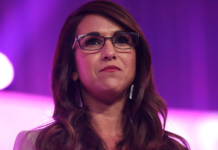Predicting who will become President of the United States so early in the election season is difficult at best. Even more so when neither the Republican nor Democratic party has chosen a nominee – and probably won’t until their respective conventions in July.
Predicting each party’s nominee to run for president is another matter entirely, and the Analytics @ American division of the Kogod School of Business at American University in Washington D.C. wondered if winning any of the states’ primaries or caucuses predicted either eventual party nomination. Apparently, there’s something to it.
Predicting Party Nominations Successfully
Kogod’s Analytics division analyzed 50 years of Federal Election Commission data for the 50 states, and found that yes, winning specific states seems to guarantee a party’s nomination. The results might make political pundits on both sides of the aisle have to rewrite their early primary playbooks and longer-term campaign strategies.
For the purposes of this article, we’ll focus on the Democratic Party only, and note that both former Secretary of State Hillary Clinton (D-N.Y.) and Senator Bernie Sanders (I-Vt.) have an equal shot at the Democratic nomination.
The Accuracy Award Goes To…
Only one state has correctly predicted the Democratic party’s nominee with 100 percent accuracy since 1968, according to Kogod, and it isn’t any of the early primary or caucus states. When Kogod compiled the prediction information, it found only Kansas seems to matter for Democrats, which holds caucuses.
Kansas held it’s caucus showdown already this year, and the win went to… Sen. Sanders.
BREAKING – @BernieSanders wins Kansas Caucuses. Watch @CNN for more #SuperSaturday updates: https://t.co/fUFppUa7v3 pic.twitter.com/1ye9PZVQJc
— CNNgo (@CNNgo) March 6, 2016
As for the delegate split, 24 went to Sen. Sanders, and 9 to Sec. Clinton, according to the Kansas Democratic Party. Fifty years of historic precedent and logic dictate Sen. Sanders should win the Democratic nomination, too.
What About Early States?
Contrary to folklore, the early states have relatively little to do with the overall nominee for both parties. In fact, three of the four early states have a really, really bad record of predicting the Democratic nominee while the other state gives the candidates a 50-50 shot.
- New Hampshire is accurate 44.44 percent of the time.
- Nevada is accurate 28.57 percent of the time, and
- South Carolina is accurate 37.5 percent of the time.
- Iowa is accurate 50 percent of the time.
#Clinton defeats #Sanders in #NevadaPrimary https://t.co/1BfpHMctfN pic.twitter.com/4MtxztJqmX
— NOOKSLIST Attorney SEARCH (@NOOKSLIST) February 21, 2016
Furthermore, says Kogod, none of the Super Tuesday states “Appear to carry as much weight as other states when it comes to the data’s crystal ball.” Specifically, Nevada ranks the least accurate at 50 on the list, New Hampshire ranks 44, and South Carolina 48. Iowa ranks 40.
Interesting that, since Sen. Sanders won New Hampshire by a landslide, and Sec. Clinton won Nevada, and South Carolina, two of the least accurate predictors. Initial results projected Iowa for Sec. Clinton, but as of the March 12, Iowa is again up in the air over a delegate controversy.
Western Illinois University has a 40 year record of 100 percent accuracy predicting the presidency, and WIU predicts Sen. Sanders would be our next president. Now another 100 percent accurate prediction has been made by default, and we’ll finally get to see if either prediction will come true in July and November.
Kogod School of Business Prediction Chart:
 Masters in Business Analytics
Masters in Business Analytics
Featured Image A Collaboration Of Kogod School Of Business And DonkeyHotey via Flickr/CC SA-2.0.
H/T Vets For Bernie





